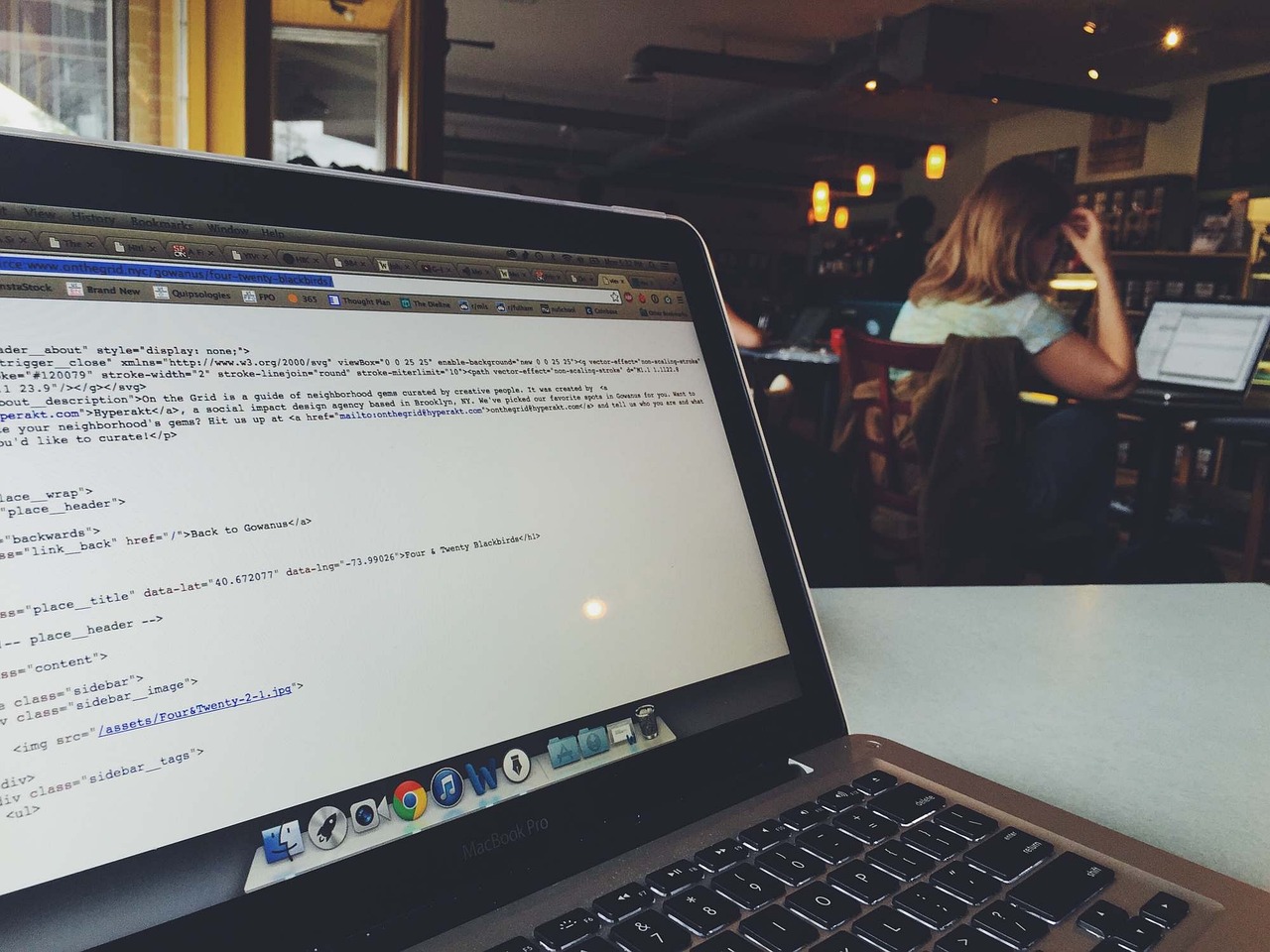In today’s fast-paced tech landscape, ensuring that your Python applications are efficiently and securely deployed into production environments is crucial. Whether you’re an experienced developer or just starting your journey, understanding the best practices for Python application deployment can significantly enhance your workflow and end-user satisfaction. This guide delves into the essential strategies, tools, and tips you need to deploy Python applications seamlessly. Explore how to optimize your applications for performance, manage dependencies effectively, and guarantee a secure deployment process, all while embracing the latest in deployment technologies like Docker for Python applications. Dive into the world of production-ready Python code and discover how to make your deployment pipeline robust and automated.
1. Preparing Python Code for Production: Optimization and Best Practices
When gearing up for production, ensuring that your Python code is optimized and adheres to best practices is crucial. Here’s how you can effectively prepare your Python code for a production environment:
Code Optimization Practices
- Profiling and Benchmarking:
It’s essential to understand where your Python application spends the most time. Tools likecProfile,profile, andtimeitcan help you with in-depth performance analysis. For instance:import cProfile import pstats def main(): # Your application code here pass profiler = cProfile.Profile() profiler.enable() main() profiler.disable() stats = pstats.Stats(profiler) stats.sort_stats('cumtime').print_stats(10)This script will profile your application and print the top 10 functions with the highest cumulative time.
- Memory Usage Optimization:
Using advanced data structures and minimizing memory footprint can speed up applications. Consider usingnumpyarrays for numerical computations instead of Python lists. Leveraging generators instead of lists can also reduce memory consumption:def large_data_processor(): for i in range(1, 1000000): yield i * i for data in large_data_processor(): print(data) - Efficient I/O Operations:
Efficient handling of file and network operations is paramount. Utilize asynchronous I/O with theasynciolibrary to handle concurrent I/O-bound processes. Example:import asyncio import aiohttp async def fetch_data(session, url): async with session.get(url) as response: return await response.text() async def main(): async with aiohttp.ClientSession() as session: content = await fetch_data(session, 'http://example.com') print(content) asyncio.run(main())
Code Quality and Maintainability
- Coding Standards:
Adopting a consistent coding style, aligned with PEP 8 guidelines, enhances code readability and maintainability. Tools likeflake8andblackcan enforce styling rules:pip install flake8 black flake8 your_script.py black your_script.py - Refactoring and Modular Code:
Breaking down monolithic code into modules and functions promotes reusability and readability. This can be facilitated using Python packages and sub-packages. - Documentation:
Comprehensive docstrings following PEP 257 and the use of tools likeSphinxfor generating documentation can aid in maintaining and scaling projects:pip install sphinx sphinx-quickstartUse reStructuredText or Markdown within docstrings to ensure they’re well-documented and informative.
Performance Monitoring
- Logging:
Implement detailed logging to monitor your application’s behavior in production using theloggingmodule. An example configuration:import logging logging.basicConfig(level=logging.INFO, format='%(asctime)s - %(name)s - %(levelname)s - %(message)s', handlers=[ logging.FileHandler("app.log"), logging.StreamHandler() ]) logger = logging.getLogger(__name__) logger.info("This is an info log message") - Application Performance Monitoring (APM):
Integrate APM solutions like New Relic, Datadog, or OpenTelemetry to gain real-time insights into application performance. These tools can help you pinpoint slow queries, memory leaks, and other critical issues affecting performance.
Following these optimization techniques and best practices ensures that your Python code is not only ready for production but also performs efficiently and reliably, meeting the high standards required for deployed applications.
2. Strategies for Secure Python Deployment
When deploying Python applications to production environments, security is paramount. Implementing robust strategies ensures the integrity, confidentiality, and availability of your application. Here are several key strategies for secure Python deployment:
1. Secure Your Codebase
One of the first strategies is to ensure your code is secure from the outset. Regularly review your code for vulnerabilities and follow security best practices, such as:
- Static Code Analysis: Utilize tools like Bandit (https://bandit.readthedocs.io/) to find common security issues in Python code.
- Code Reviews: Peer reviews and automated code reviews can help spot vulnerabilities early.
2. Use a Virtual Environment
Using virtual environments (e.g., venv or virtualenv) isolates your project’s dependencies, reducing the risk of dependency conflicts and ensuring that only the necessary packages are deployed. This isolation also helps in avoiding situations where malicious dependencies could be unintentionally included.
# Creating a virtual environment
python3 -m venv myenv
# Activating the virtual environment
source myenv/bin/activate
3. Environment Variables for Sensitive Data
Never hard-code sensitive information such as API keys, database credentials, or other secrets directly in your code. Instead, use environment variables or secret management services to securely handle this data.
import os
DATABASE_URL = os.getenv('DATABASE_URL')
SECRET_KEY = os.getenv('SECRET_KEY')
4. Secure Configuration Management
Ensure your configuration files are not included in version control and that they are secured properly. Use tools such as dotenv (https://pypi.org/project/python-dotenv/) for environment-specific configurations, ensuring they remain confidential.
5. Apply Security Patches Promptly
Keep your Python runtime and dependencies updated with the latest security patches. Utilize tools like Python’s pip to check for and install updates.
pip list --outdated
pip install --upgrade <package-name>
6. Enable HTTPS
All client-server communication should be encrypted. Enable HTTPS using an SSL/TLS certificate to secure data in transit. Popular options include Let’s Encrypt (https://letsencrypt.org/) for obtaining free SSL/TLS certificates.
7. Secure Your Web Framework
If you are using a web framework such as Django or Flask, ensure you follow the specific security guidelines for that framework:
- Django: Keep
DEBUG = Falsein production settings. Make use of security middlewares likeXContentTypeOptionsMiddleware,SecurityMiddleware, andContentSecurityPolicyMiddleware. - Flask: Use libraries like Flask-Talisman to add security headers to your Flask applications.
8. Implement Logging and Monitoring
Monitoring your application ensures you can detect and respond to security threats swiftly. Use logging libraries such as logging in Python, and centralize logs with solutions like ELK Stack (Elasticsearch, Logstash, Kibana) or Splunk for more advanced monitoring.
import logging
logging.basicConfig(level=logging.INFO)
logger = logging.getLogger(__name__)
logger.info('This is an info message')
logger.warning('This is a warning message')
9. Secure Your Deployment Pipeline
If you’re using CI/CD for deployment, ensure that your pipeline is secure:
- Use SSH keys instead of passwords for accessing servers.
- Ensure that your CI/CD tools are up-to-date and securely configured.
- Store the secrets securely, for instance using tools like HashiCorp Vault (https://www.vaultproject.io/).
By adhering to these strategies, you can significantly mitigate security risks and ensure your Python application is securely deployed in a production environment.
3. Managing Dependencies in Python Applications
A critical component of deploying Python applications successfully involves managing dependencies effectively. Dependencies refer to the libraries and packages that your application needs to run. Properly managing these dependencies can significantly enhance consistency, reliability, and security. Here’s how to effectively manage dependencies for Python applications in a production environment.
Virtual Environments
One of the foundational best practices for managing Python dependencies is to use virtual environments. Virtual environments provide isolated Python environments, ensuring that dependencies required by different projects don’t interfere with each other.
Using virtualenv or venv, you can create a dedicated environment:
$ python3 -m venv myenv
$ source myenv/bin/activate
After activating the virtual environment, you can install your dependencies inside it using pip. This ensures that each project maintains its dependencies separately, which is crucial in production environments.
Dependency Freezing and requirements.txt
Freezing dependencies means capturing the exact versions of all packages that your application depends on. This is typically done using the command:
$ pip freeze > requirements.txt
The requirements.txt file then contains all necessary dependencies along with their specific versions. When deploying your application, you can recreate the exact environment by installing the dependencies specified in requirements.txt:
$ pip install -r requirements.txt
Dependency Management Tools
Several tools can help in efficiently managing dependencies:
- Poetry: Poetry is a tool that facilitates dependency management and packaging in Python. It can automatically create and maintain a
pyproject.tomlfile. Poetry simplifies dealing with dependencies and virtual environments.$ poetry init $ poetry add <package> - Pipenv: Pipenv combines the functionalities of
pipandvirtualenv. It automatically creates and manages a virtual environment for your projects and adds/removes packages from yourPipfileas you install/uninstall packages.$ pipenv install <package>
Each tool has its own set of features and benefits. Depending on your project’s needs, you can choose the one that fits your workflow best.
Handling Platform-Specific Dependencies
Sometimes, packages might have platform-specific dependencies that need to be managed separately. In requirements.txt, you can specify conditional dependencies:
somepackage==1.0.0; platform_system=="Windows"
anotherpackage==2.0.0; python_version<"3.8"
This ensures that the correct dependencies are installed based on the platform or Python version.
Secure Handling of Dependencies
Security is paramount when managing dependencies. Always use trusted sources for your packages, such as the Python Package Index (PyPI). Regularly check for vulnerabilities in the packages you use. Tools like Safety and Bandit can analyze your dependencies and report any security issues.
$ pip install safety
$ safety check
Using Build Tools for Dependencies
For more complex deployments, using build tools like Make, ninja, or CI/CD pipelines to automate dependency installation can ensure consistent and repeatable environments. For instance, a Makefile might include a target for setting up the environment:
setup:
python3 -m venv venv
. venv/bin/activate; pip install -r requirements.txt
Continuous Integration and Deployment Pipelines
For continuous deployment, incorporating dependency management into your CI/CD pipelines is essential. Ensure that your pipeline scripts create virtual environments and install dependencies using your requirements.txt file to verify that all necessary packages are fetched correctly and match expected versions.
Documentation and Dependency Audits
Maintain clear and thorough documentation regarding dependency updates and changes. Regular audits of your dependencies can mitigate the risks posed by deprecated or vulnerable packages. Doing so ensures that your application remains stable and secure over time.
By following these best practices, you can manage your Python application’s dependencies effectively, ensuring a reliable, secure, and maintainable production environment.
4. Docker for Python Applications: Containerization Techniques
Containerization has become an industry standard for deploying applications, and Docker is one of the most popular tools for this purpose. Using Docker for Python applications allows for consistent environment management, scalability, and portability. Here, we’ll delve into containerization techniques specific to Python and how they can be leveraged for efficient deployments in production environments.
Creating a Dockerfile
A Dockerfile is a script that contains a set of instructions on how to build a Docker image. For Python applications, it typically involves selecting a base image, installing dependencies, and copying the application code into the container. Here is a basic example for a Python web application using Flask:
# Use the official Python image from the Docker Hub
FROM python:3.9-slim
# Set the working directory in the container
WORKDIR /app
# Copy the requirements file into the container
COPY requirements.txt .
# Install any dependencies specified in requirements.txt
RUN pip install --no-cache-dir -r requirements.txt
# Copy the rest of the application code into the container
COPY . .
# Expose the port the application runs on
EXPOSE 5000
# Define the command to run the application
CMD ["python", "app.py"]
This Dockerfile is using the official Python 3.9 slim image, which is smaller and thus more efficient for production use. Both COPY instructions are crucial; the first focuses on dependencies, helping with build cache optimization, and the second transfers the application code.
Optimizing the Docker Image
Optimizing Docker images is essential for faster deployment and execution. Consider the following strategies:
- Multi-Stage Builds: This technique helps to reduce the final image size by dividing the build process into multiple stages. Here is an example:
# Stage 1: Builder
FROM python:3.9-slim AS builder
WORKDIR /app
COPY requirements.txt .
RUN pip install --no-cache-dir -r requirements.txt
# Stage 2: Final
FROM python:3.9-slim
WORKDIR /app
COPY --from=builder /usr/local/lib/python3.9/site-packages /usr/local/lib/python3.9/site-packages
COPY --from=builder /app .
EXPOSE 5000
CMD ["python", "app.py"]
In this example, the dependencies are installed in the builder stage, and only the necessary files are copied to the final image, resulting in a smaller and cleaner final image.
- Minimize Layers: Consolidate
RUN,COPY, andADDcommands as much as possible to reduce the number of layers in the image. - Use .dockerignore: Similar to
.gitignore, a.dockerignorefile can exclude certain files and directories from the Docker build context. This reduces the size of the Docker image by not including unnecessary files.
Setting Environment Variables
Managing configuration settings via environment variables is a common practice in Dockerized environments. Here’s an example of setting environment variables in a Dockerfile:
# Set environment variables
ENV APP_ENV=production
ENV APP_DEBUG=False
ENV DATABASE_URL=postgres://user:password@hostname/dbname
Alternatively, environment variables can be specified through Docker Compose or during the container run command:
version: '3'
services:
web:
image: my-python-app
ports:
- "5000:5000"
environment:
- APP_ENV=production
- APP_DEBUG=False
- DATABASE_URL=postgres://user:password@hostname/dbname
Managing Dependencies
Leverage Docker’s caching mechanism to speed up builds. Installing dependencies listed in requirements.txt before copying application code ensures that only changes to dependency files trigger a new installation. This significantly reduces build times.
Docker Compose
Using Docker Compose is a powerful way to manage multi-container applications. Here’s an example to set up a Python application with a PostgreSQL database:
version: '3'
services:
web:
build: .
ports:
- "5000:5000"
links:
- db
environment:
- DATABASE_URL=postgres://user:password@db/dbname
db:
image: postgres:13
environment:
POSTGRES_USER: user
POSTGRES_PASSWORD: password
POSTGRES_DB: dbname
Best Practices
Employ the following best practices for deploying Python applications with Docker:
- Security: Regularly scan Docker images for vulnerabilities using tools like Clair or Trivy.
- Performance Profiling: Utilize Docker profiling tools to monitor performance and optimize where necessary.
- Scalability: Integrate Docker with orchestration tools like Kubernetes for automated scaling and management.
Conclusion
Docker significantly streamlines the process of deploying Python applications to production environments. By utilizing best practices such as multi-stage builds, environment variables, and Docker Compose, you can ensure that your containerized application is both efficient and maintainable. For more detailed documentation on Docker, you can visit Docker’s official documentation.
5. Automating Python Deployment: Continuous Integration and Deployment Tips
Automating Python deployment in a production environment is essential for ensuring code reliability, reducing human error, and maintaining consistent environments. Continuous Integration (CI) and Continuous Deployment (CD) systems offer these benefits by automating the steps from code integration to deployment.
Continuous Integration
Continuous Integration involves automatically testing and integrating code changes frequently. Popular CI tools like Jenkins, CircleCI, Travis CI, and GitHub Actions facilitate this process. Here’s how to set up a basic CI pipeline using GitHub Actions:
1. Create a .github/workflows directory
Create a ci.yml file in the .github/workflows directory in your repository.
name: CI Pipeline
on: [push, pull_request]
jobs:
build:
runs-on: ubuntu-latest
steps:
- name: Checkout code
uses: actions/checkout@v2
- name: Set up Python
uses: actions/setup-python@v2
with:
python-version: '3.x'
- name: Install dependencies
run: |
python -m pip install --upgrade pip
pip install -r requirements.txt
- name: Run tests
run: |
pytest
In this example, GitHub Actions will automatically test your Python application each time code is pushed to the repository or a pull request is opened. The steps involve checking out the code, setting up a Python environment, installing dependencies, and running tests using pytest.
Continuous Deployment
Once your code has passed the CI pipeline, Continuous Deployment can automatically push the changes to a production environment. Here’s how to integrate a basic CD pipeline using GitHub Actions and AWS Elastic Beanstalk:
1. Add Deployment Step to ci.yml
Extend your ci.yml file to include deployment steps:
name: CI/CD Pipeline
on: [push]
jobs:
build:
runs-on: ubuntu-latest
steps:
- name: Checkout code
uses: actions/checkout@v2
- name: Set up Python
uses: actions/setup-python@v2
with:
python-version: '3.x'
- name: Install dependencies
run: |
python -m pip install --upgrade pip
pip install -r requirements.txt
- name: Run tests
run: |
pytest
- name: Deploy to Elastic Beanstalk
if: github.ref == 'refs/heads/main'
env:
AWS_ACCESS_KEY_ID: ${{ secrets.AWS_ACCESS_KEY_ID }}
AWS_SECRET_ACCESS_KEY: ${{ secrets.AWS_SECRET_ACCESS_KEY }}
AWS_REGION: 'us-west-1'
APPLICATION_NAME: 'YourAppName'
ENVIRONMENT_NAME: 'YourEnvName'
run: |
zip -r application.zip .
aws elasticbeanstalk create-application-version --application-name $APPLICATION_NAME --version-label v1 --source-bundle S3Bucket="your-bucket-name",S3Key="application.zip"
aws elasticbeanstalk update-environment --environment-name $ENVIRONMENT_NAME --version-label v1
In this pipeline, the job will deploy your Python application to AWS Elastic Beanstalk when code is pushed to the main branch. Note that you need to set AWS credentials in your GitHub repository secrets.
Additional CD Tips
- Blue-Green Deployments: To minimize downtime, consider using blue-green deployment strategies which involve using two identical production environments. For instance, AWS Elastic Beanstalk supports this natively. Update the inactive environment and then switch traffic DNS to it.
- Feature Flags: Use feature flags to control feature rollouts dynamically, minimizing the risk of introducing bugs in the production environment.
- Monitoring and Rollbacks: Use monitoring tools like New Relic, Datadog, or CloudWatch to track application performance post-deployment. Set up automatic rollbacks on deployment failure to prevent prolonged outages.
By integrating CI and CD tools into your workflow, you streamline your Python application deployment process, paving the way for faster, more reliable releases. Optimize your environment to adapt to changes swiftly, ensuring your Python applications maintain high availability and performance in production.
6. Ensuring Production-Ready Python Code: Testing and Quality Assurance
Ensuring production-ready Python code is paramount for a successful deployment and long-term maintainability of your application. Testing and quality assurance (QA) form the cornerstone of this process, helping to uncover bugs, enforce code quality, and ensure that your application behaves as expected in a production environment.
Automated Testing Frameworks
Automated testing is essential for maintaining high standards of code quality. Employing frameworks such as pytest, unittest, and nose can streamline this process.
Example pytest test case:
import pytest
from my_app import my_function
def test_my_function():
assert my_function(2, 3) == 5
assert my_function(-1, 1) == 0
assert my_function(0, 0) == 0
You can run all tests using the command:
pytest
Automated tests should ideally cover unit tests, integration tests, and end-to-end tests to catch issues at various levels.
Continuous Testing with CI/CD
Integrating your tests into a Continuous Integration/Continuous Deployment (CI/CD) pipeline ensures that code changes are automatically tested when committed. Tools like Jenkins, GitLab CI, CircleCI, and GitHub Actions are popular for setting up CI/CD pipelines.
Example GitHub Actions workflow for running tests:
name: CI
on: [push, pull_request]
jobs:
test:
runs-on: ubuntu-latest
steps:
- name: Check out the code
uses: actions/checkout@v2
- name: Set up Python
uses: actions/setup-python@v2
with:
python-version: 3.8
- name: Install dependencies
run: pip install -r requirements.txt
- name: Run tests
run: pytest
Code Quality Tools
Tools like flake8, black, and pylint help in maintaining code quality by enforcing coding standards and highlighting potential issues.
Example .github/workflows file for linting:
name: Linting
on: [push, pull_request]
jobs:
lint:
runs-on: ubuntu-latest
steps:
- uses: actions/checkout@v2
- name: Set up Python
uses: actions/setup-python@v2
with:
python-version: 3.8
- name: Install dependencies
run: |
pip install flake8
- name: Run Linting
run: |
flake8 my_app/
Code Reviews
Code reviews are a powerful practice for catching issues that automated tests might miss. They also encourage knowledge sharing and collective code ownership within the team. Leveraging tools like GitHub Pull Requests or GitLab Merge Requests facilitates a structured review process.
Monitoring and Logging
Even with rigorous testing, some issues might only surface in a production environment. Implementing monitoring solutions like Prometheus, Grafana, and integrating logging libraries such as logging and loguru in Python can help in quickly identifying and addressing issues post-deployment.
Example logging setup:
import logging
logging.basicConfig(level=logging.INFO, filename='app.log', filemode='a',
format='%(name)s - %(levelname)s - %(message)s')
logger = logging.getLogger('my_app')
Security Testing
Ensure that security testing is part of your QA process. Tools like Bandit can scan your Python code for common security issues.
Example Bandit usage:
pip install bandit
bandit -r my_app/
Incorporating these best practices into your deployment process will significantly improve the reliability and maintainability of your Python applications.




